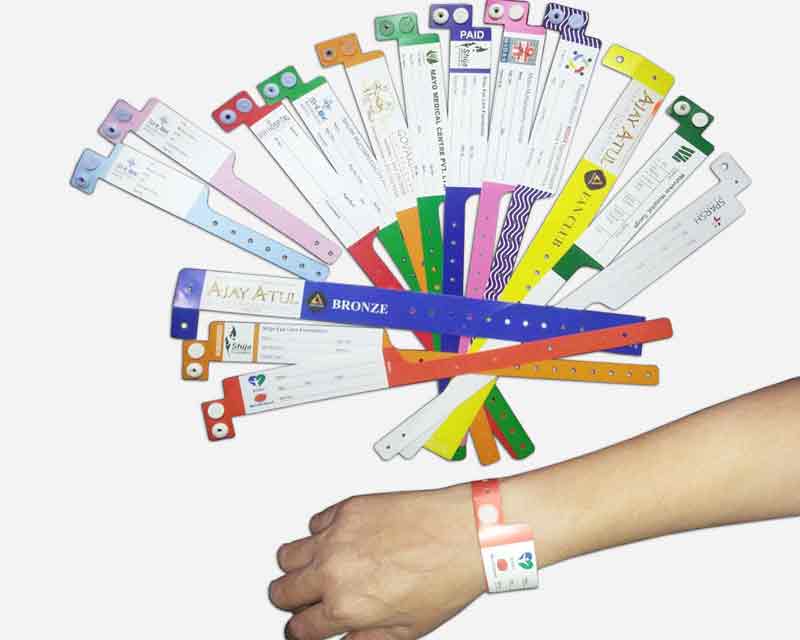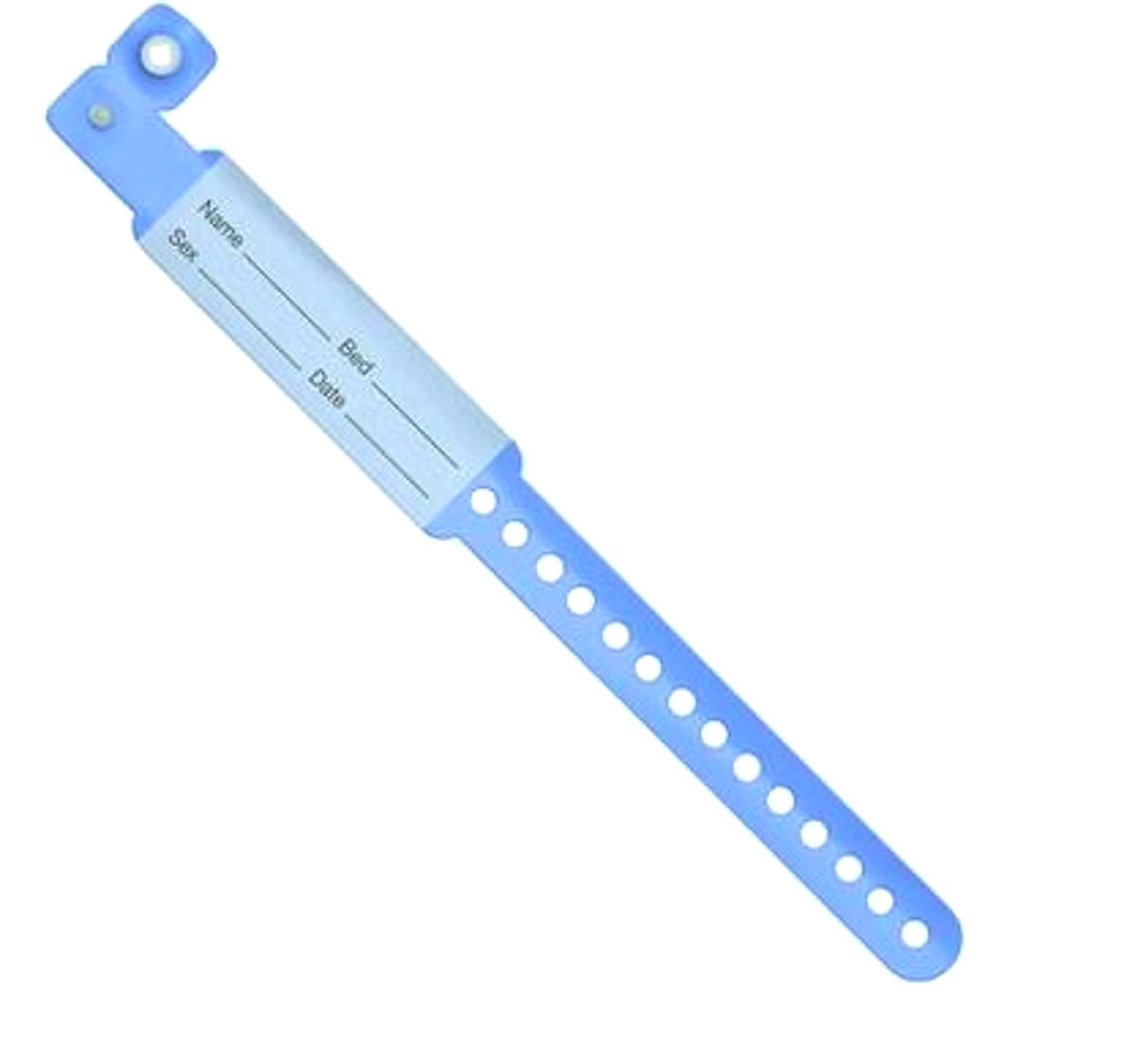The Increasing Need for Advanced Patient Identification Bands in Modern Healthcare Facilities
The Increasing Need for Advanced Patient Identification Bands in Modern Healthcare Facilities
Blog Article
Exploring the Various Sorts Of Patient Identification Band Made Use Of in Medical Facilities
In the detailed globe of healthcare, the vital role of Patient Identification bands frequently goes undetected. These bands, differing from basic paper wristbands to innovative RFID bands, develop the backbone of Patient safety and security protocols, making sure precision in Patient Identification. The huge variety of these bands, each with its special benefits and limitations, is typically overlooked. As we browse through this topic, one may acquire insight into the subtle complexities and critical value of such bands in clinical facilities.
Comprehending the Importance of Patient Identification Bands
While they may look like plain devices, Patient Identification bands play an important role in clinical facilities. These bands serve as an essential tool for verifying Patient identification, stopping medical errors connected to misidentification. The bands normally present important info such as the Patient's name, age, blood kind, and any type of recognized allergic reactions. They permit health care specialists to rapidly access this important details, consequently assisting in timely and exact clinical treatment. Patient Identification bands additionally aid in simplifying management jobs, guaranteeing exact record-keeping and billing. In spite of their simpleness, these bands embody the principle of Patient safety and security, a cornerstone of quality health treatment. Without them, the danger of medical errors, and consequently, Patient damage, may significantly boost.
Typical Paper Wristbands: Their Usage and Limitations
Traditional paper wristbands have actually been a staple in Patient Identification across different medical centers. While their use prevails, they harbor particular limitations that might affect their efficiency in Patient administration. This area will certainly concentrate on the scope of their application and the integral disadvantages connected with their usage.
Paper Wristbands: Use Range
In the realm of Patient Identification, paper wristbands have long held an important duty. These bands are generally made use of in outpatient setups, where the Patient's remain is momentary. The wristbands have essential info such as the Patient's name, date of birth, and an one-of-a-kind Identification number. This straightforward, yet efficient system, enables doctor to promptly and precisely determine people, guaranteeing the right treatment is administered. Paper wristbands are additionally made use of in emergency situation circumstances, where quick Identification is vital. Their usage reaches occasions like blood contribution drives and mass inoculation programs, better highlighting their versatility. Regardless of innovations in technology, the modest paper wristband stays a cost-efficient and reputable service for Patient Identification in numerous healthcare situations.
Limitations of Paper Wristbands
In spite of their prevalent usage, paper wristbands are not without their disadvantages. Their physical longevity is just one of the substantial constraints. Exposure to water, sweat, or misuse can provide them unreadable or perhaps create them to disintegrate. Additionally, paper wristbands usually do not have the technical capacities of more modern-day choices, such as barcoding or RFID chips, restricting their functionality to merely showing created details. The failure to update or change the information on the wristband is another imperfection. In addition, if the info is handwritten, clarity can be jeopardized, leading to possible misidentification. Finally, paper wristbands can trigger pain or skin inflammation to some patients, specifically when put on for extended durations.
Barcoded Wristbands: Developments in Patient Identification
While Patient Identification has actually long been an essential aspect of health care, the introduction of barcoded wristbands represents a significant jump onward. These bands take advantage of the simpleness of barcoding technology, enabling Patient information to be swiftly scanned and accessed. They enhance the rate and accuracy of Patient Identification, minimizing the danger of medical errors connected to misidentification. Barcoded wristbands are cost-effective, easy to produce, and get rid of handwriting errors usual with hand-operated systems. They are not without constraints. While they provide renovations over conventional bands, the barcode can become smudged or used, rendering it unreadable. Despite this, barcoded wristbands continue to be a necessary device in contemporary healthcare settings, signifying the crossway of modern technology and Patient care.
Superhigh Frequency Identification (RFID) Bands: a Step Towards Futuristic Health Care
The advancement of Patient Identification bands has caused the emergence of Superhigh frequency Identification (RFID) Bands (patient identification band). These innovative gadgets existing vital advantages for medical care facilities, providing an extra efficient and technically advanced ways of Patient Identification. The implementation of RFID in medical care is a substantial step towards an extra futuristic technique to Patient monitoring and safety
Recognizing RFID Bands

RFID Bands: Secret Benefits
Primarily, these bands enhance Patient security by offering exact, rapid Identification, thereby minimizing clinical mistakes. RFID bands can store a huge amount of Patient information, including medical history and allergic reactions, allowing individualized care. On the whole, RFID bands represent a significant advancement in Patient Identification modern technology, benefiting both individuals and healthcare providers.
Applying RFID in Medical Care
As we enter a technologically innovative period, the execution of RFID bands in healthcare becomes increasingly crucial. These bands give a seamless means to track and identify patients, ensuring their safety and security and improving effectiveness in therapy procedures. RFID bands offer countless benefits over traditional Identification techniques. They can store a substantial quantity of data, including the Patient's medical history and therapy plans, which can be quickly accessed by doctor. This information assists physicians make informed choices regarding the Patient's therapy plan. In addition, RFID bands minimize clinical errors by supplying accurate Patient Identification, which is vital in preventing misdiagnosis or wrong medication administration. Thus, the application of RFID bands is a considerable action in the direction of improving Patient safety and security and medical care shipment.

Color-Coded Wristbands: Helping in Quick and Accurate Diagnosis
In the bustling environment of a clinical facility, color-coded wristbands have actually become essential tools for swift and precise Identification of an individual's medical condition. additional info These wristbands, put on by individuals, lug particular colors that correspond to different medical conditions or standings. Red can suggest allergic reaction risks, while yellow may represent an autumn threat. This system is created to offer instant aesthetic cues to medical care suppliers, boosting Patient safety and security and care high quality. In emergency situation scenarios, the use of these wristbands permits fast decision-making. Nevertheless, the performance of color-coded wristbands relies on the harmony of shade analysis throughout medical care establishments, needing common requirements for constant application.
Methods for Efficient Application and Management of Patient ID Bands
Attaining optimum use of Patient Identification bands requires a well-structured method for their execution and management. The initial step entails training all health personnel on the value of correctly using and checking out these bands. Healthcare facilities need to systematize the usage of ID bands across all departments, making sure uniformity and reducing discrepancies. Normal audits needs to be carried out to verify adherence to plans and to fix any kind of variances. Patient education is additionally critical; clients have to comprehend the objective of the bands and the requirement for their consistent wear. patient identification band. It's crucial to have a backup strategy in area, such as barcode scanning or biometrics, to guarantee that Patient Identification is never ever jeopardized.
Final thought
Patient Identification bands are important visit their website in clinical centers to make certain safety and security and precision. Effective implementation and administration of these bands can dramatically decrease medical errors, boost efficiency, and improve overall Patient treatment.
These bands, differing from straightforward paper wristbands to innovative RFID bands, develop the foundation of Patient safety and security methods, making sure accuracy in Patient Identification.The advancement of Patient Identification bands has brought regarding the introduction of Radio Frequency Identification (RFID) Bands. On the whole, RFID bands stand for a significant development in Patient Identification modern technology, profiting both individuals and medical care service providers.
RFID bands decrease medical mistakes by offering precise Patient Identification, which is vital in stopping misdiagnosis or incorrect medication administration. Patient education is additionally crucial; clients must comprehend the function of the bands and the need for their constant wear.
Report this page